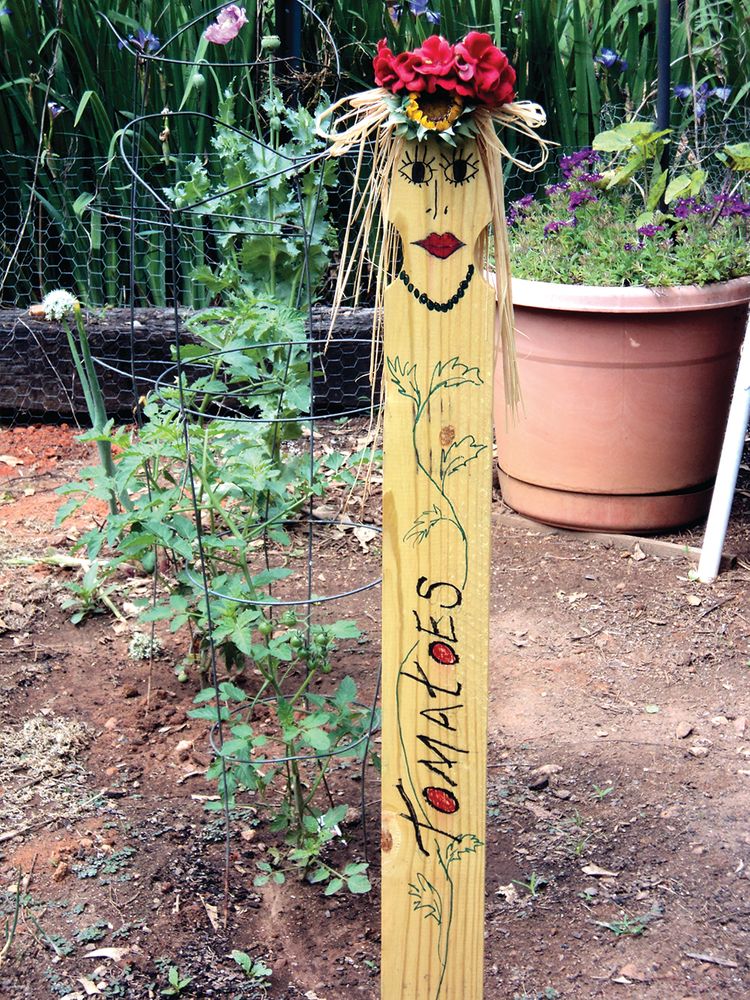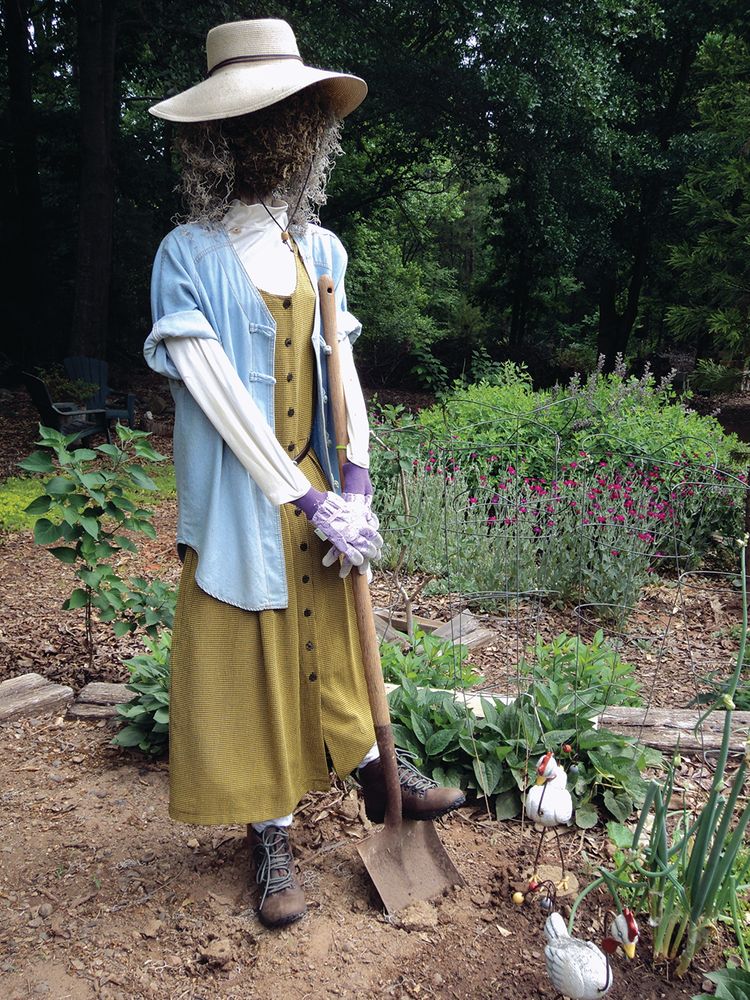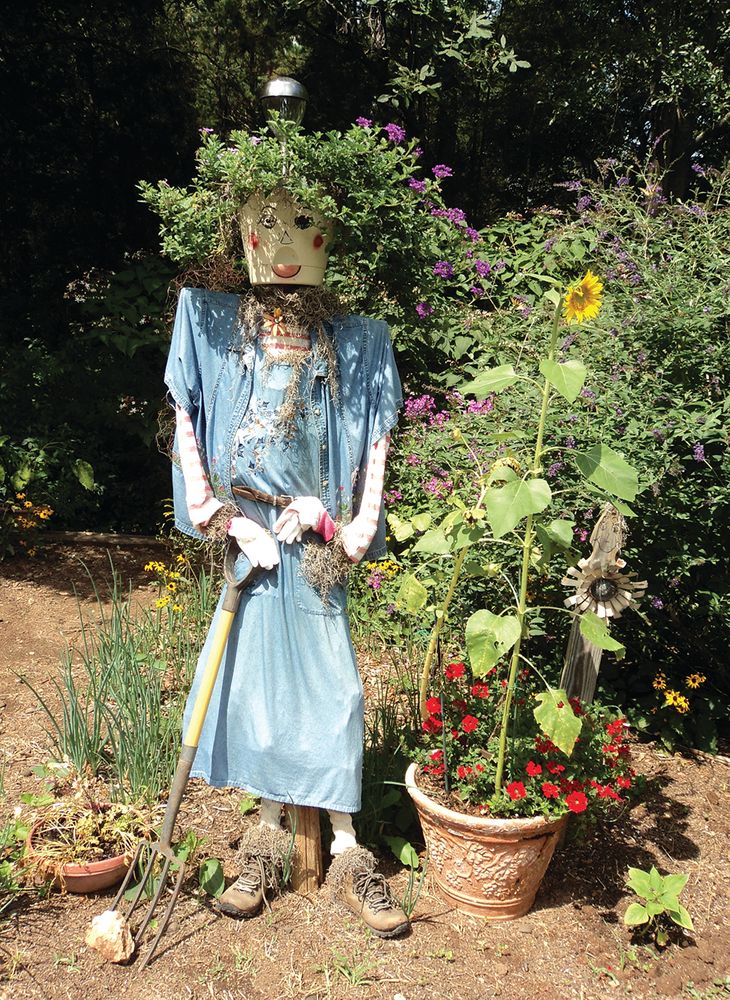As I sit outside in my garden near my scarecrow, Ms. Pickles with her rag–mop hair attached to a 4 x 4, I’m inspired to write this garden article about scarecrows. And my humble apologies to those who may have a fear of scarecrows, figuring if there’s a fear of clowns, there must be one for scarecrows, too. So, I looked it up and, yup, there it was ´formidophobia´… but I promise this will not be a scary article like Hollywood’s horror movies where there always seems to be a creepy little doll or scarecrow. Instead, I’ll concentrate on their history and the more fun and lovable scarecrow ¨If I only had a brain¨ type in The Wizard of Oz.
As far as their history goes in the United States, scarecrows were originally conceived to perform a specific task in farmers´ fields as the name describes — scare crows! But farmers also used them to scare off doves, red-wing blackbirds, grackles, sparrows, turkeys and deer that not only ate the seed but sugar from young corn. But the problem with crows is they have a tendency to forage a field in flocks. They hit hard eating the plant’s sugar, depart leaving only the greens, then in come the deer to finish the rest, and the price of corn goes up! Unfortunately, scarecrows only work for so long before crows (remember they’re smart) get used to them. So, following WWII, farmers realized they could accomplish a lot more by spraying their crops with pesticides like DDT. This went on until the 1960s when it was discovered that pesticides were actually bad for you. Today, many big farms have replaced scarecrows with chemicals, windmills, and devices that emit ultrasonic waves.
In recorded history, it is believed that the scarecrow dates back before Christ to Egypt where it was used to protect their wheat fields along the Nile River from flocks of quail. Their version of the scarecrow was a wooden frame covered with nets. The farmers would hide in the fields and when the quail approached, they would scare them into the nets. That would not only save their crops, but the caught quails would make for a tasty dinner! Around 2500 B.C., Greek farmers came up with a carved wooden scarecrow. Later, the Japanese farmers started making their version to protect the rice fields. They were shaped like people dressed in raincoats and straw hats. Medieval Britain used young boys and girls as live scarecrows or ´bird scarers´ to patrol the fields and scare the birds by waving their arms and throwing stones. But when the population decreased due to plague, farmers discovered there was a shortage of children to scamper around shooing birds away. Instead, they stuffed sacks with straw and used painted gourds to make heads with faces ´straw men´ which they would then lean up against a pole to scare birds away…similar to our version of a scarecrow.
Today, scarecrows are still used to protect small gardens or as a display in open fields of produce. But in general, we mostly enjoy scarecrows in our gardens or as decorations during the autumn season with bales of hay and pumpkins. They’re mostly silly but fun to make…they make you smile! Every year, I look forward to going to a second-hand store and buying Ms. Pickles a new outfit. She has evolved from a moss head with hat to a flowerpot with solar light, and now her new look with a rag-mop on a 4 x 4 standing a little over 6 feet tall in my vegetable garden. And yes, the only one who gets scared from time to time is me…the crows love her!
Scarecrows can be whimsical and fun to make! And this is the perfect time to be creative with ´National Build A Scarecrow Day´ fast approaching. Each year in the United States, this special day is celebrated on the first Sunday in July…this year July 4th. Festivals are held around the country and prizes awarded for scarecrows of all categories: ugly, funny, creative, scary, etc. Whether you have a garden or not and haven’t made a scarecrow, this is the time to give it a try. Including the kids or grandkids in this project is a great way to get them interested in the garden. And with your help and a little imagination, they can create their very own Silly Garden Scarecrow!
Footnote:
Using a wooden fence picket available at Lowes or Home Depot is a simple way for kids to make a scarecrow for their very own little garden plot.■





